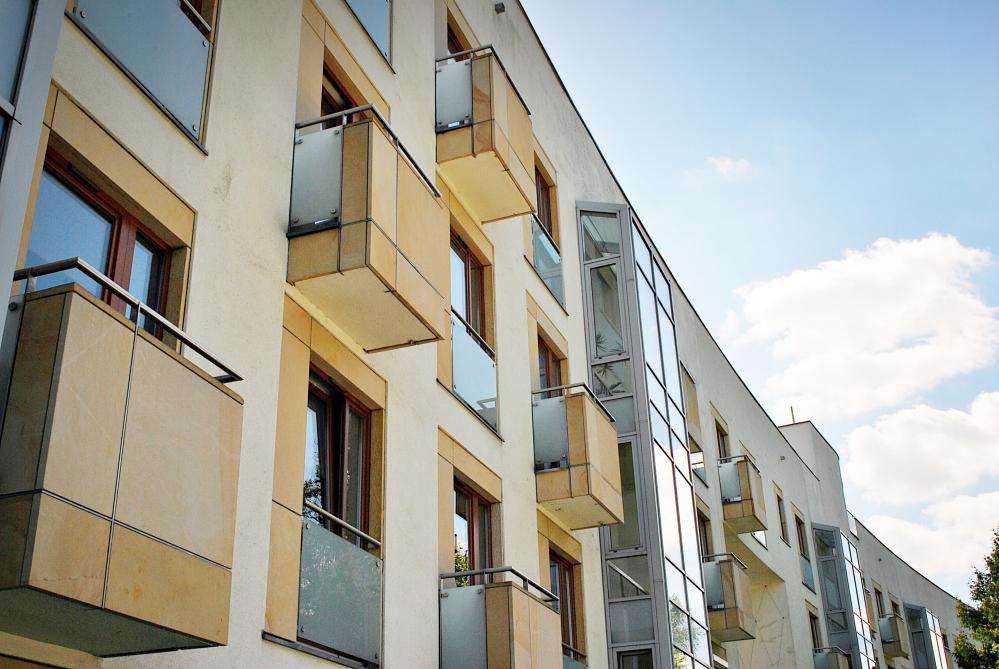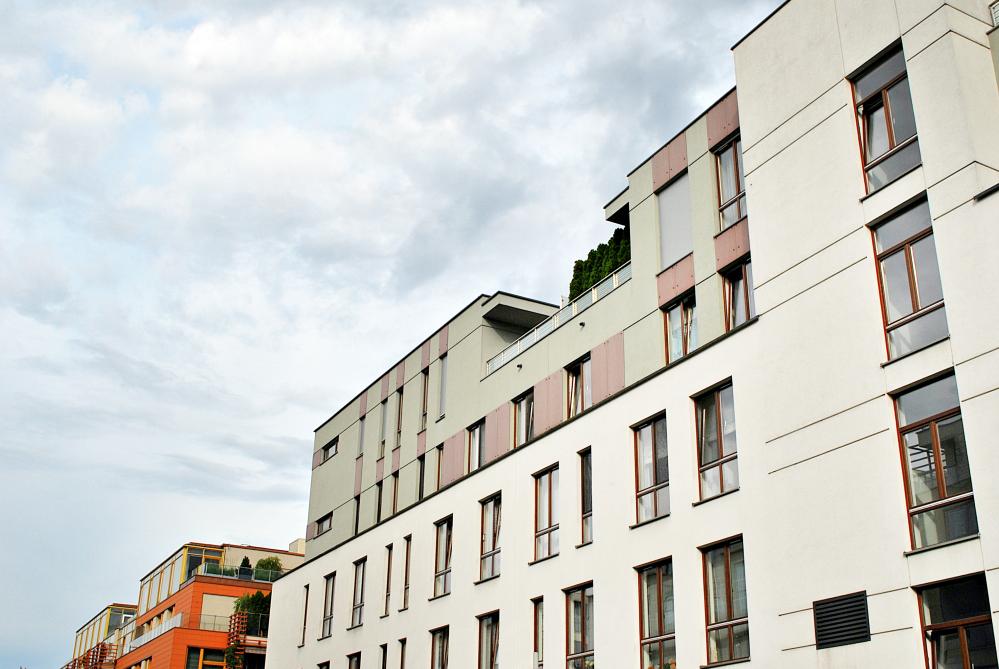
Understanding Barrierefreies Wohnen Berlin
When we talk about barrierefreies Wohnen Berlin, we delve into more than just architecture or interior design; we touch upon a fundamental aspect of inclusivity and accessibility. At AAB Die Raumkultur, we’ve dedicated years to refining our expertise in creating spaces that everyone can use and enjoy, regardless of physical abilities. This dedication has not only been a cornerstone of our professional journey but also a personal one, as we’ve seen firsthand the impact that thoughtful, barrier-free design can have on individuals‘ lives.
Designing for accessibility means considering a wide range of needs – from ensuring wheelchair access to incorporating features that assist those with visual or hearing impairments. In Berlin, a city known for its diverse population and historical architecture, integrating such features presents unique challenges and opportunities. Our approach has always been to respect the fabric of the city while pushing the boundaries of what’s possible within interior spaces.
The Importance of Accessibility
Accessibility in living spaces isn’t merely a convenience; it’s a necessity for creating equitable environments where everyone can live independently and with dignity. In Berlin, as in many urban centers, the aging population and individuals with disabilities face significant barriers to finding suitable housing. This is why our commitment to barrierefreies Wohnen Berlin is more than a professional obligation–it’s a moral one.
Our work has shown us that accessible design benefits not just individuals with immediate needs but also provides a framework that can accommodate anyone’s needs over time. This foresighted approach means considering the lifecycle of a living space and anticipating changes in mobility or health that can affect how people interact with their environment.
Design Principles
Core Considerations
Our design philosophy for barrierefreies Wohnen Berlin revolves around several core principles: usability, safety, and aesthetics. We believe that a well-designed space not only meets technical accessibility standards but is also visually appealing and welcoming for all users. The harmony between function and form is where we see the greatest impact, transforming ordinary spaces into extraordinary living environments.
Integrating Technology
Incorporating smart home technology has been a game-changer in creating barrier-free living spaces. Automated systems for lighting, heating, and security can significantly enhance independence for individuals with mobility or sensory impairments. Our projects often include these technologies, tailored to the specific needs of the users, ensuring that control is always at their fingertips.
Challenges and Solutions
One of the most significant challenges we face in Berlin is retrofitting older buildings to meet modern accessibility standards. These structures often have narrow doorways, steps, and other features that are not easily modified. However, our experience has taught us that with creativity and persistence, solutions can be found. Ramps, lifts, and even reconfiguring spaces can make a substantial difference, allowing these buildings to provide accessible homes without compromising their historical integrity.
In new constructions, the challenge often lies in convincing stakeholders of the importance of incorporating accessibility features from the outset. Here, our role extends beyond design and construction; we advocate for accessibility, presenting the long-term benefits to developers, planners, and future residents. Our aim is to shift perspectives, emphasizing that accessible design is not just a requirement but an investment in a more inclusive society.
Real-life Impacts
Throughout our years of working on barrierefreies Wohnen Berlin, we’ve collected stories that remind us why we do what we do. There was the retired professor who could navigate his apartment in his wheelchair effortlessly, marking a return to independence he thought he’d lost. Then, the young family who found that the accessible features we installed not only benefited their daughter, who uses a wheelchair, but also made life easier for everyone in the home.
These stories, among many others, underscore the transformative power of barrier-free design. They motivate us to continue pushing for innovation and acceptance of universal design principles in all our projects.
Future Directions
Looking forward, we see barrierefreies Wohnen Berlin as a growing field with endless possibilities. As technology advances, we anticipate incorporating more adaptive features that can be customized to individual needs, making homes more responsive and supportive. Additionally, as public awareness grows, we hope to see a shift in how accessible design is perceived, moving from a niche requirement to a standard consideration in all construction and renovation projects.
Our vision is for a city where barrier-free living is not an exception but the norm. We are committed to being at the forefront of this change, leveraging our expertise to advocate for and implement designs that make a meaningful difference in people’s lives. By continuing to innovate and challenge conventional thinking, we can make Berlin a model city for accessibility and inclusion.
Conclusion
At AAB Die Raumkultur, barrierefreies Wohnen Berlin is more than just a segment of our services–it’s a reflection of our values and vision for a more inclusive world. Our journey has been one of continuous learning, advocating, and innovating to meet the diverse needs of the communities we serve. As we look to the future, we remain committed to expanding our reach and impact, making barrier-free living a reality for more people in Berlin and beyond.
We invite you to join us in this mission, whether you’re in need of an accessible living space or interested in learning more about our approach to design. Together, we can create environments that uplift and empower, proving that good design is not just about aesthetics–it’s about accessibility, inclusivity, and making a difference in the world.

What exactly does Barrierefreies Wohnen entail, and why is it important?
Barrierefreies Wohnen, or barrier-free living, is a design philosophy that emphasizes creating living spaces accessible to all individuals, regardless of their physical abilities. It’s about more than just installing ramps and wide doorways; it encompasses a holistic approach to design that considers the diverse needs of people with disabilities, the elderly, and anyone who might face mobility challenges at some point in their lives. The importance of barrier-free living cannot be overstated–it’s about enabling independence, promoting dignity, and fostering an inclusive society. Imagine a world where every person, regardless of their mobility, can navigate their living environment effortlessly. That’s the goal of barrierefreies Wohnen.
What are some specific challenges of implementing barrier-free living in Berlin, and how do we overcome them?
In Berlin, the integration of barrier-free features into the city’s diverse and often historical architecture presents a unique set of challenges. Many buildings are old, with features that are not easily modified to accommodate things like wheelchair ramps or lifts. Our approach combines creative problem-solving with technological innovation. For instance, when faced with narrow doorways, we might use space-saving door technology or reconfigure the layout to improve accessibility. Each project requires a tailored solution that respects the building’s integrity while enhancing its accessibility.
How does barrier-free design benefit not just individuals with disabilities, but everyone?
The beauty of barrier-free design is that it benefits everyone, not just those with immediate accessibility needs. Take, for example, a family with a young child in a stroller. The ramps and wide doorways intended for wheelchair users also make their daily life much easier. Or consider an elderly person who might find stairs challenging; a barrier-free design allows them to live more independently. The key takeaway is that designing with accessibility in mind creates a more flexible and accommodating space that meets the needs of a wider range of people, ultimately contributing to a more inclusive community.
How is smart home technology transforming barrier-free living spaces?
Integrating smart home technology into barrier-free living spaces is a game-changer. Automated systems for lighting, heating, and security can significantly enhance independence for individuals with mobility or sensory impairments. Imagine being able to control the temperature, lights, or security systems of your home with a simple voice command or through a smartphone app. These technologies are not just about convenience; they’re about empowering individuals to have more control over their living environments. Our projects often include such technologies, tailored to the specific needs of the user, ensuring that control is literally at their fingertips.
What does the future hold for barrier-free living in Berlin?
The future of barrier-free living in Berlin is incredibly promising. As technology advances, we anticipate more adaptive features that can be customized to individual needs, making homes even more responsive and supportive. Moreover, as public awareness grows, we hope that accessible design will shift from being viewed as a niche requirement to a standard consideration in all construction and renovation projects. Our vision is to make Berlin a model city for accessibility and inclusion, where barrier-free living is the norm, not the exception. This entails not just architectural innovation but also a cultural shift towards greater empathy and inclusivity.
How can individuals and communities contribute to promoting barrier-free living?
Individuals and communities can play a significant role in promoting barrier-free living. This can range from advocating for more inclusive building codes and regulations to simply raising awareness about the importance of accessibility in our own neighborhoods. If you’re involved in a construction or renovation project, consider incorporating accessibility features from the outset. And remember, promoting barrier-free living is not just about making physical changes to our environment; it’s also about challenging stereotypes and fostering a culture of inclusivity. By sharing stories of how barrier-free design has positively impacted lives, we can inspire action and change across our communities.
Resources
- U.S. Access Board – The U.S. Access Board is a federal agency committed to accessible design. Their website provides guidelines and resources for creating inclusive environments.
- World Health Organization (WHO) – The WHO offers information on disability and accessibility issues, advocating for the rights of individuals with disabilities worldwide.
- Americans with Disabilities Act (ADA) – The ADA website provides comprehensive information on accessibility standards and regulations in the United States.
- Federal Ministry of Transport and Digital Infrastructure (Germany) – The German Federal Ministry focuses on transport and digital infrastructure, including initiatives for accessible design in living spaces.
